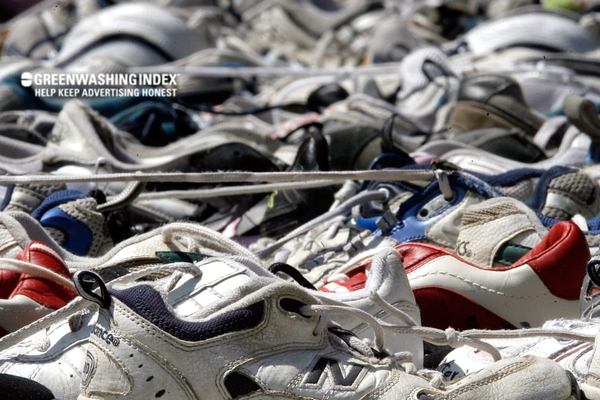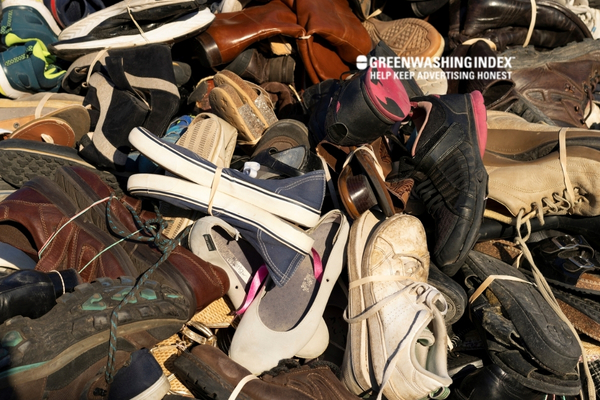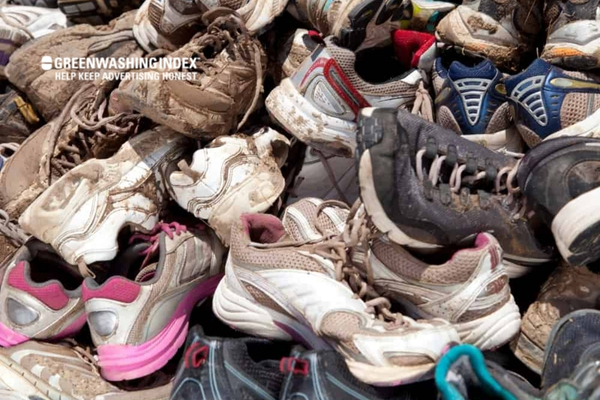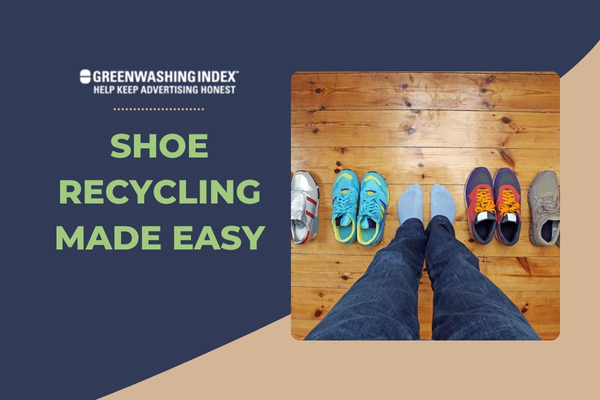Have you ever thought about what happens to your old shoes when you toss them out? Imagine if there was a way to make those worn-out kicks help the planet instead of hurting it. That’s where shoe recycling comes into play—and it’s more important than you might think!
It’s not just about getting rid of clutter; it’s an act that can reduce waste and give your shoes a new life. Stick around, because I’m going to show you how simple it can be!
Looking for ways to recycle your shoes? You’ve landed in the right spot. Shoe recycling involves giving old footwear a second chance through various sustainable methods.
Instead of piling up in landfills, these shoes can be broken down and remade into something new or donated for reuse. By taking part in this process, you’re contributing significantly to environmental protection and resource conservation.
Understanding Shoe Recycling
Shoe recycling is all about giving old shoes a new lease on life. Instead of tossing them in the trash, we can send them off to be made into something new. Here’s how it works: first, take your used sneakers or boots to a shoe recycling spot. They sort them out by material—rubber, leather, fabric—and then get to work.

To delve deeper into the technicalities and explore a well-structured perspective on the process, consider examining the recommended footwear recycling process flow. This reference outlines the stages of recycling shoes in a systematic flow, providing a clear understanding of how each step contributes to the overall recycling effort.
These bits get cleaned up and broken down. For example, rubber soles might be ground into tiny pieces to make playground surfaces or running tracks. The fabrics could become insulation for homes or padding for gym mats. It’s like a puzzle, taking apart each piece of an old shoe and finding the best use for it.
Recycling shoes is not just about shredding the old ones into bits; sometimes they help others directly. If your shoes are still wearable but you don’t need them anymore, they can go to someone who does. There are places that collect gently worn shoes and give them to people who can’t afford new ones.
Why We Need to Recycle Shoes?
When we recycle shoes, we do a lot of good for our planet:
- Cut down on waste: Millions of worn-out shoes pile up in landfills every year where they sit for ages without breaking down—especially the plastic parts.
- Save resources: By turning old footwear into new stuff, we don’t have to use fresh materials from the Earth.
- Less pollution: Making brand-new things often means factories putting dirty fumes into our air—reusing materials helps stop that.
By taking these steps with our used-up kicks instead of throwing them away, we’re adding less mess to our world and helping keep it green and clean.
Types of Shoes You Can Recycle
Believe it or not, lots of different kinds of footwear can join the recycling fun:
- Sneakers: These common sports shoes are great because their soles have rubber that can be reused.
- Boots: Even sturdy boots find new uses after recycling.
- Sandals: Depending on what they’re made from—if it’s recyclable material—they’re good candidates too.
- Kids’ shoes: Those tiny sneakers grow out fast but they’ve got plenty left in them for recycling purposes.
Sadly though, not every shoe fits; some fancy high heels or those with special decorations might not make the cut—recyclers can’t always separate all those materials easily.
There you have it—a straightforward guide on how shoe recycling helps us walk towards a greener tomorrow!
Also Read: Aluminum Foil Recycling: Easy Guide to Eco-Friendly Practices
Practical Steps to Recycle Your Shoes
Recycling shoes is easier than you might think. But I understand it can be confusing, trying to figure out where to start. Don’t worry—I’ve got you covered with a clear guide on how to give your old shoes a new life.

Where to Take Your Shoes for Recycling?
Finding a place to take your old shoes isn’t as tricky as it sounds. You have several options:
- Local Drop-off Centers: Your town likely has a recycling center that accepts footwear. Give them a call or look online for their recycling guidelines.
- Retail Stores: Some shoe stores offer take-back programs where they collect used shoes for recycling or donation. Next time you’re shopping, ask if they have such schemes.
- Charity Organizations: Many charities will gladly accept gently worn shoes to help those in need.
Before dropping off your shoes, check what the place does with them. Some might recycle them into new products, while others may donate them to people who need shoes.
How to Prepare Your Shoes for Recycling?
- Clean Them Up: Nobody wants dirty, smelly shoes! Clean off any mud or dirt and wipe down both the inside and outside with a damp cloth.
- Dry Them Out: Make sure your shoes are totally dry—it helps prevent mold and keeps them in better shape for the next person.
- Separate Components: If your shoe has removable parts like insoles or laces, take them out—some parts of the shoe might not be recyclable depending on where you take them.
- Pair Them Up: Tie the laces together or use an elastic band so they don’t get separated at the recycling center—they’re more likely to be reused if they’re still a pair!
Remember: These little steps can make a big difference in making sure your old kicks are ready for their next adventure!
Innovative Shoe Recycling Programs You Should Know About
It’s not just about dropping off old sneakers at stores; some folks are coming up with really smart ideas! Let’s shine some light on these efforts:
- Nike’s Reuse-a-Shoe program: They turn old athletic shoes into playgrounds and running tracks—how cool is that?
- Adidas’s partnership with Parley: These guys create sustainable footwear by turning ocean plastic into sporty sneakers!
- Soles4Souls: This group isn’t just about giving away donated footwear; they empower people by helping create small businesses around shoe sales in developing countries.
Each of these programs shows how creative thinking can transform our unworn sole-mates into helpful resources instead of letting them clog up landfills!
So there you have it—a complete breakdown of what it takes to get involved in shoe recycling without having to scratch your head figuring out where everything goes!
Also Read: Microwave Disposal Guide: Eco-Friendly Recycling Secrets
Challenges in Shoe Recycling
When I think about shoe recycling, I see some big hurdles. Shoes are not easy to recycle. They have lots of parts made from different materials stuck together, like rubber, plastic, leather, and cloth. These bits and pieces make it tricky to break shoes down for recycling.
Here’s the breakdown of the tough spots:
- Materials Mixed Up: Shoes usually have a mix of materials that are hard to separate. Imagine trying to peel an orange if it was glued to an apple – that’s kind of what shoe recycling is up against.
- Glues and Adhesives: The stuff that holds shoes together can be really stubborn. It doesn’t like to let go, which makes taking shoes apart quite a challenge.
- Variety of Materials: There are so many types of plastics and rubbers used in shoes. Because they’re all different, they all need their own special recycling process.
- Lack of Infrastructure: Many places don’t have the right set-up or machines for recycling shoes properly.
- A Small Market: There aren’t enough businesses that want to buy recycled shoe materials yet.
How Companies are Overcoming These Challenges?
Now let me tell you how some smart companies are finding ways around these problems:
- Designing with Recycling in Mind:
- Some companies are making shoes with fewer parts so they’re easier to break down.
- They’re also using snaps or clips instead of glue so you can take the shoes apart like Legos when it’s time to recycle them.
- Material Innovation:
- Cool new materials are popping up that can replace the hard-to-recycle ones without making your kicks any less kickin’.
- For instance, there’s this neat material created from plants instead of oil-based plastics.
- Recycling Programs Within Brands:
- Brands themselves sometimes take back old shoes for recycling and give discounts on new purchases – a win-win!
- Technology Upgrades:
- New tech is being developed for better sorting and separating all those tricky shoe parts.
- Partnering with Experts:
- Some shoe folks team up with scientists who really know their stuff about turning old products into new resources.
- Creating Demand for Recycled Materials:
- To build interest in recycled bits from old footwear, businesses show off how cool these eco-friendly materials can be by using them in other products too!
Each step might seem small on its own but put them together and there’s hope for kicking shoe waste out the door!
Also Read: Metal Recycling: Your Guide to Sustainable Disposal
Doing Your Part Beyond Shoe Recycling
As someone who values our planet, I’m always looking for ways to lend a hand to Mother Nature. Shoe recycling is one step in the right direction, but I believe we can do even more. It’s not just about what we do with old shoes; it’s also about our choices when buying new ones.

Sustainable Footwear Choices
When I think about shoe recycling, I know it’s important. But there’s more I can do than just recycle my old shoes. One big step is choosing eco-friendly shoes when I buy new ones. This means looking for brands that care about the planet.
Look for eco-friendly materials: Some brands use recycled materials to make new shoes. They might use plastic bottles or old tires. That’s good because it means less waste in landfills.
Support fair practices: It’s not just about the materials but also how the shoes are made. Some companies make sure their workers get fair pay and work in safe places. Supporting these brands helps people and the planet.
Check the company’s goals: Companies that tell us they want to be better for the environment are often making sustainable footwear. They try to use less water and energy when making their shoes.
By picking these kinds of shoes, I can help our planet a lot.
DIY Projects – Giving Old Shoes New Life
Sometimes, my old shoes aren’t good enough for shoe recycling centers. But that doesn’t mean they’re useless! There are fun ways to give them a new purpose instead of throwing them away.
- Plant holders: I can take an old pair of boots and fill them with dirt and seeds or a small plant. Then, I place them on my porch or in my garden as cute planters.
- Storage bins: Sneakers with their tops cut off turn into handy holders for pencils, tools, or even craft supplies.
- Playthings for pets: My dog loves playing with an old sneaker tied into a knot—it has become his favorite toy!
- Art projects: With some glue, paint, and imagination, those worn-out heels can transform into a masterpiece ready to decorate my wall or shelf.
- Fashion accessories: With a bit of careful cutting and stitching, an old shoe could become part of a funky belt or even a purse!
By reusing my shoes like this, I am not just throwing them away; instead, they get yet another chance at being useful – which is super cool!
These are fun ways to be kinder to Earth without needing fancy tools or skills—and everyone likes that idea!
FAQs
What happens to shoes that I recycle?
When you recycle shoes, they are often torn apart. The pieces may become padding for outdoor courts, playgrounds or new shoe soles. It’s a smart way to keep them out of landfills.
Are there any shoes that cannot be recycled?
Yes, some can’t be recycled because of the materials they’re made of or their poor condition. It’s a good idea to check with local shoe recycling programs about what they can take.
Does shoe recycling actually make a difference?
Absolutely! Shoe recycling reduces waste, cuts down on greenhouse gases, and saves valuable resources by reusing materials. It’s a real help for the planet.
Conclusion
Through this guide, I’ve shed light on the importance of shoe recycling and the various methods we can use to ensure our footwear doesn’t harm the environment.
By understanding what shoe recycling is and why it’s needed, we can make a real difference in waste reduction and resource conservation. It’s inspiring to see how innovative programs are addressing industry challenges, paving the way for more sustainable practices.



